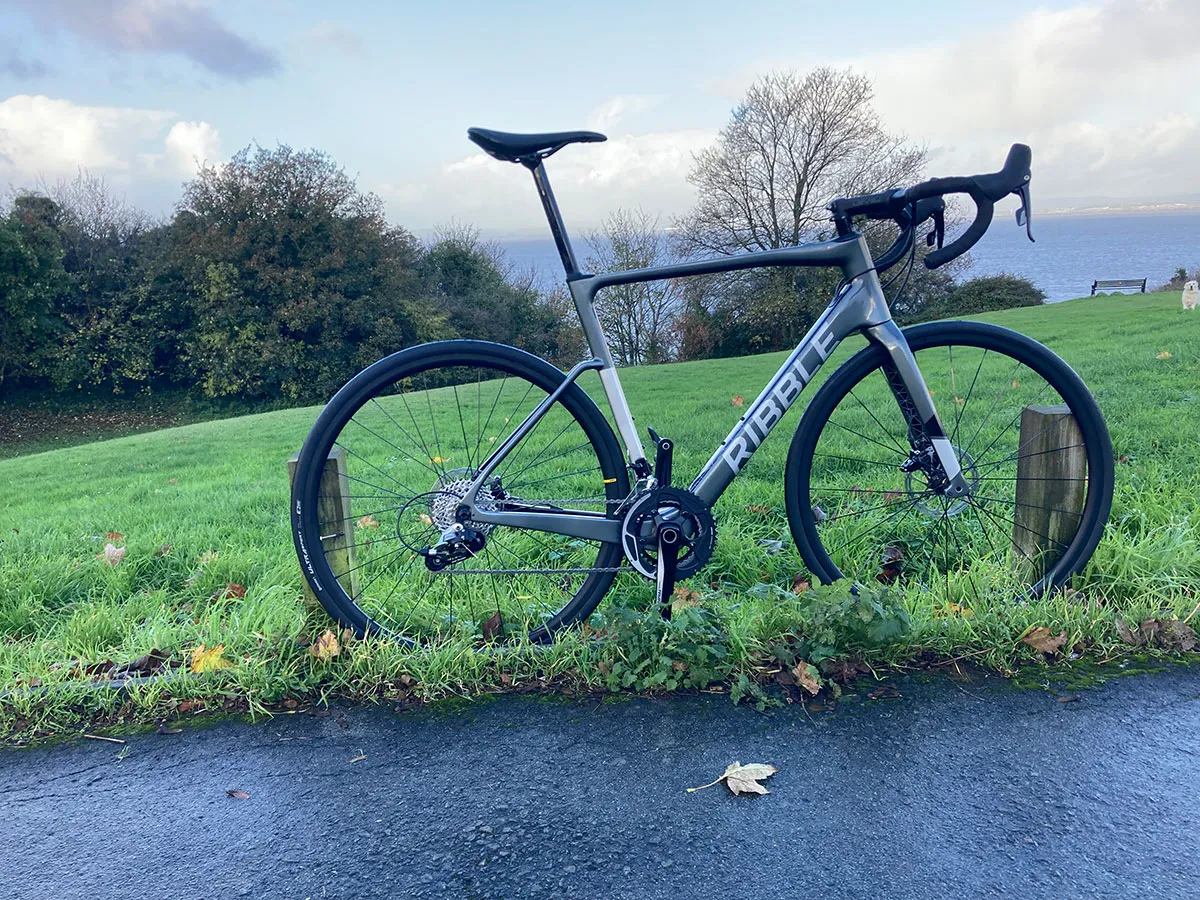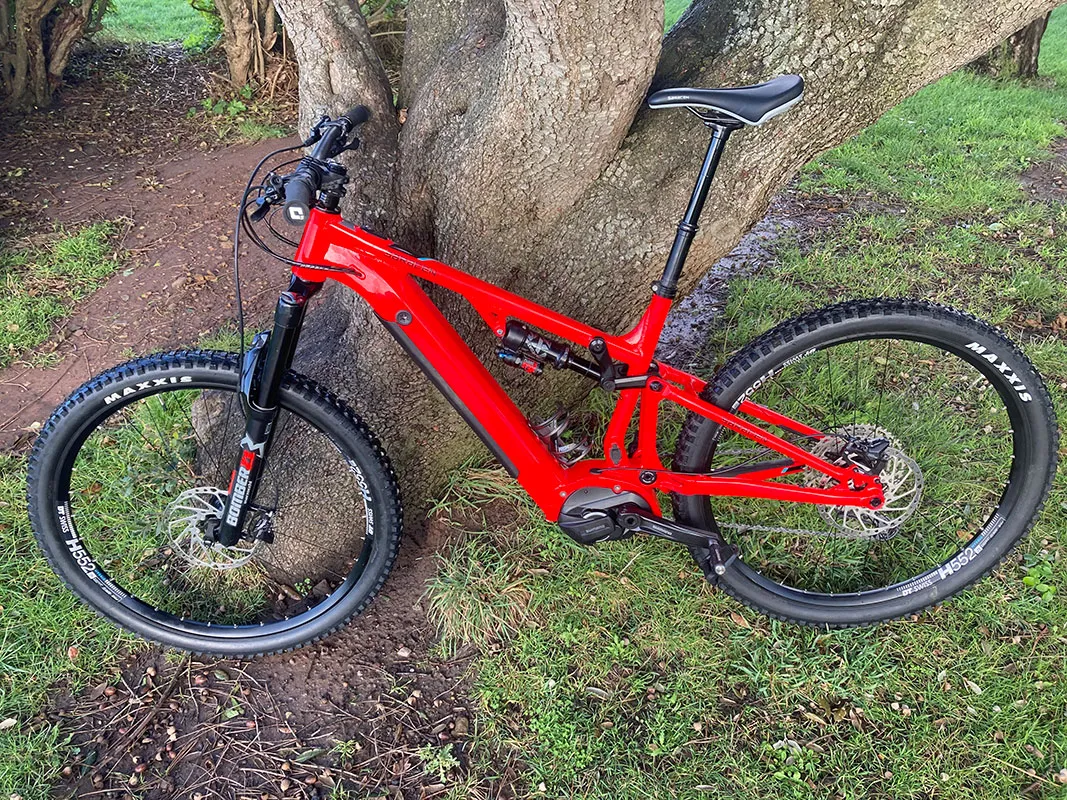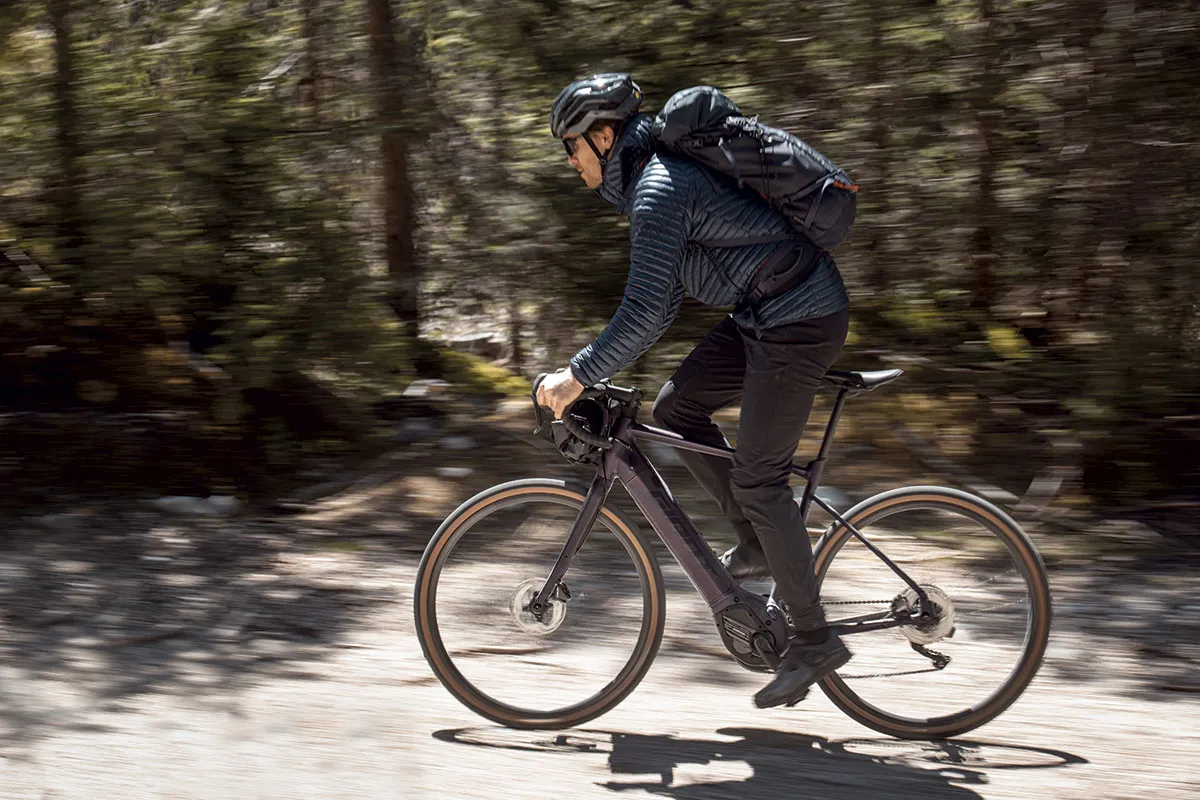Electric bikes are the fastest-growing sector of the UK bike market, following the trend seen elsewhere. Half of the bikes sold in the Netherlands, for instance, are now ebikes. And you can see why. Not only are they environmentally a much sounder option than driving, they’re also a great way for folk who are not in six-pack shape to start shedding the pounds.
That said, you’ll find plenty of fitter riders using ebikes, too. The extra speed up the climbs means you can go further for the same effort, which is great if you’re having to fit riding around work or parenting and want to squeeze as many miles as possible into a short time frame. They’re also fun… though only to 25km/hr where they’re capped by UK law! Here, we test a quintet on the market to suit numerous cycling scenarios…
The best electric bikes
Best overall - Brompton Electric C Line Explore

Like Hoover and vacuums cleaners, Brompton’s ubiquity means they are the folding bike. Vis-à-vis, that means for many cyclists they are the commuting bike. Brompton forged their reputation on a superb folding mechanism that’s simple and results in a compact set-up. That’s seen here, the C Line Explore taking fewer than 30 seconds to fold and unfold. It folds to a compact 585mm high x 565mm long and 270mm wide, and weighs 14.5kg. That’s perfect for hopping on and off a train, as per our Yatton to Bristol sojourn.
It actually weighs 17.4kg with the battery that sits on the front of the bike. It’s easily added and removed, and has a handle to carry. The battery’s 300Wh and features an LED display to show battery status. It has four modes of assistance, which you switch through via a press of the battery button. On paper, reaching over to the battery is a safety hazard. In practice, it was absolutely fine. The front-wheel motor’s 250 watts. Range is around 30km to 70km depending on mode, temperature and terrain. Manually, you’re given six gears (2 x three-speed) and the ride is incredibly fun.
The phone mount’s worth the extra outlay to attach your phone and tap into Brompton’s Electric app (iOS and Android) where you can switch modes to save reaching over to the battery. It also monitors metrics like speed and distance. In fact, the only moot point’s the bell, which rattles all the time. We’d suggest replacing.
Rating: 9/10
Best if money is no object - Riese & Muller UBN 5

Riese & Muller are the artisans of the ebike world. This is the German brand’s singlespeed, meaning just the one gear. That signals its urban, commuting intentions, and ensures it’ll be easier to maintain than a geared version. The Fazua motor provides a smooth, natural feeling of assistance with a maximum power output of 450 watts and maximum torque of 60Nm. You can shift through the three modes via a thumb lever, the LED on the top tube highlighting which mode you’re in. The pink mode (greatest assist) certainly came in handy when cruising up Bristol’s short but steep Park St.
Minimalism’s the UBN 5’s major sell. It weighs sub-20kg (18kg), boasts a slimline battery that slots into the sleek downtube (range a solid 40 to 100 miles) and features a svelte pannier rack (bags not included). The built-in Supernova Mini2 headlight is plenty strong enough for urban riding, while your trousers will thank the grime-free carbon Gates drive belt and sleek mudguards.
Rather neatly, the LED mode panel lifts up to reveal a USB-C port for charging your smartphone that can slot into a phone mount (at an additional cost). In theory, you can then download the company’s RX Connect app to provide riding data (distance, speed…), statistics and further safety features, albeit it wasn’t live at time of press. TRP disc brakes are quality stoppers, giving reassurance in the urban jungle.
Rating: 8/10
Best on a budget - Volt Connect

Volt is the only dedicated electric-bike brand here, highlighted by their extensive range across the genres. Folding, mountain, step-through… they have the lot. We went urban, testing the nine-speed-geared Connect around the rather sodden, winter streets of Bristol.
It’s a utilitarian build, featuring full-length mudguards to deflect the worst the roads can flick up; a slick but strong pannier rack complete with elastic straps; front and rear lights that are powered by the battery; and an integrated security lock on the rear wheel. Its no-nonsense aluminium frame and reinforced wheels shout that this is one urban bike designed to batter the elements into submission.
The lithium ion battery sits within the downtube and is removable for easy charging. However, it’s removed via a key. Activating the motor’s by key, too. That strengthens security but isn’t ideal for the absent-minded of us, so keep the spares somewhere safe. As for the motor, it’s a 250-watt Bafang M200 that sits within the crank. And it’s rather impressive, delivery a natural-feeling ride across three different modes. At its most frugal, range is around 100km, which is impressive.
It’s a comfortable experience, improved via the Suntour forks, the likes of which you’d see on a mountain bike. It’s a neat touch to smooth out wrinkles in the road. All in all, it’s a fine urban bike, albeit all of that durability comes at a weight penalty with the bike plus battery coming in at over 23kg. So not one for those of you who live on the top floor of a flat.
Rating: 8/10
- Buy now from Volt Bikes (£2499)
Best of the rest
Ribble Endurance SL e Sport

Lansdown Hill out of Bath is a brute. Distance is only 3km but it averages 6.8% gradient and maxes out at 12.2%. It’s a sweat fest… but less so on Brit cycle manufacturer Ribble’s e-road bike, which they claim is the lightest e-road bike around. It’s certainly svelte with builds in this range from just 10.5kg. It’s so svelte you don’t even notice the battery that’s integrated into the downtube. The Mahle SmartBike System 250-watt motor is nestled within the hub of the rear wheel and provides three levels of assistance, which you shift through via a top-tube mounted control button. How often you’ll need assistance, however, remains to be seen. Its lightweight nature means, certainly on the flats, it’s relatively easy to hit the motor’s 25km/hr limit. So it’s solely for the steepest of hills, meaning its range is over 100km. Impressive.
As for the rest of the kit, you have 22 gears via SRAM’s Rival groupset. This shifts smoothly and reliably. The Mavic Ksyrium wheels are bulletproof, while the Prologo saddle is comfy, albeit with cycle-specific bib shorts.
It’s a fast bike with a racy geometry – perhaps too racy for some who might want a slightly more upright position. Then again, you could always choose a smaller stem to help there. Internal cable routing’s neat, though a little trickier to maintain, while the custom colour option will appeal to many.
Rating: 8/10
Saracen Ariel 50E

Those of you who mountain bike at trail centres know that the cost of an uplift – where you and your bike are driven up the slopes by the centre’s (wo)man with a van – can add up. That’s been one of the drivers behind the growth in e-mountain bikes. As has the potential to ride longer off the beaten track for even greater adventures.
In the case of Saracen’s Ariel 50E, that potential’s down to Shimano’s EP8 motor with 85Nm of torque and 250 watts of power that sits within the bottom bracket. It has three riding modes – Eco, Trail and Boost – and a Walk mode, which is a common feature on electric mountain bikes for when the steepness and muddiness just becomes too much. Shimano’s own 504Wh-capacity battery provides the juice, though that juice is less than many of its contemporaries, so be judicious with mode choice if you’re riding all-day long. We tested at the Forest of Dean trail centre, though, and had ample power for a morning’s riding.
Noted MTB brand take care of fork duties, featuring 160mmm travel that’s fine for most terrain, while the 150mm travel in the frame is a solid offering, too. The wheels are from DT Swiss and consume the gnarliest of trails for breakfast. It’s a solid e-mountain bike, though one for the racier riders out there as the reach to the bars is relatively hefty.
Rating: 7/10
- Buy now from Freewheel (£4499)
Mirider One

The latest version of the One from British brand MiRider features a telescopic bar and telescopic seatpost, complete with clever flip-lever to lock the post height, and is claimed to fit anyone between 5ft and 6ft 4in. If you’re taller, MiRider offers an optional longer seatpost.
We’re impressed with the attention to detail, such as the neoprene cable tidy that wraps the cables together so they avoid the fold. We’re also fans of the accessories. Take the front bike light, activated by the system’s LCD head unit, and integrated mudguards, which keep road spray at bay. And all for no extra.
The electric assistance is based around a 250W rear-hub motor, charged by a 252Wh battery that sits in the frame. Beside the right-hand brake lever sits a thumb-activated lever. This is the power-boost trigger, which sends you from a standing start to 4.5mph without pedalling and continues with a turbo-like boost up to the legal limit of 15.5mph. It’s good for swift getaways from traffic lights and when climbing hills.
Finally an in impressive-value package, the bar-mounted LCD head unit displays distance, time and current speed, and allows you to switch between the five power levels via up and down switches.
Rating: 9/10
- Buy now from Mirider (£1595)
Canyon Grand:ON

Unlike the Saracen on test, this is hardtail rather than full suspension. For those new to mountain biking, that means you have suspension in the front fork only, rather than within the frame, too. It’s designed more for long days out on moderately rough terrain compared to the gnarly parcours that’s the domain of the full sus.
The ON 9 uses Shimano’s EP8 motor that sits in the bottom bracket and is powered by a 630Wh battery that’s concealed in the fat downtube. Rather neatly, you can tune the motor to fit your riding style and terrain via the Canyon app. If you tune it for economical charge, it’ll deliver a mightily impressive 100km for lighter riders.
The frame’s forged from aluminium with huge welds for greater strength. A heavily sloped top tube keeps the frame out of the way on technical terrain and provides room to move about. The Canyon also has a very low bottom bracket height, for a lower centre of gravity and stable rider position.
Finally, a dropper post is a welcome addition as it enables you to rise or lower in your saddle depending on whether you’re descending (low for more stability) or on the flat (normal for maximum power).
Rating: 8/10
- Buy now from Canyon (£3399)
GRAVEL REVOLT E+

A gravel bike is a relatively recent phenomenon, combining the slick nature of a road bike with the more rugged DNA of off-roading. Its popularity exploded in America where they have endless networks of trails and has spread throughout the world.
This electric gravel bike from one of the world’s largest bike manufacturers, Giant, is powered by the Shimano EP8 motor that we saw on the Canyon. It’s powered by a 500Wh battery and gives you five levels of power. You can shift between these via the top-tube-integrated controller, which Giant term ‘RideControl Go’. Essentially, it’s a series of five LEDs that represent the power level you’re in, which sit parallel with another five lights showing your battery status.
As for the rider, the 40mm-wide Maxxis gravel tyres absorb the bump and grind of off-road, but still have enough about them to consume tarmac at speed. That said, the rider’s relatively firm, which is arguably down to the weight. At 18.17kg, it’s relatively bulbous for an e-gravel bike, albeit to be fair it does remain nimble around the trails.
Rating: 8/10
- Buy now from £3,399 (Giant Bicycles)
Are e-bikes road legal?
All ebikes available from mainstream brands in the UK are road-legal ‘pedal-assist’ or ‘pedelec’ models. Their motors only kick in when you pedal and cut out at 25km/hr (15.5mph). Their formal moniker is ‘electrically assisted pedal cycles’ (EPAC), and you don’t need a licence to ride one. Also, it doesn’t need to be registered, taxed or insured.
What counts as an EPAC? According to the government, as well as having pedals to propel it, it must show either: the power output or manufacturer of the motor; and the battery’s voltage or the maximum speed of the bike. An EPAC can have more than two wheels (like a tricycle).
What do I need to know before buying an ebike?
Your first port of call is, like you would a traditional bike, knowing which genre of ebike to buy. Looking to become the new Bradley Wiggins but with a little helping hand? You want an e-road bike. Predominantly to the office and back? An e-commuter, e-hybrid or e-folder? Heading off-road? If very gnarly, an e-mountain bike. If mildly gnarly, an e-gravel bike. Of course, this isn’t the law. You can happily consume many a mile of tarmac on an e-mountain bike but, to maximise its features, choose the bike that suits your riding.
They really are an ingenious invention but there are a few downsides over a traditional bike. Despite the shrinking evolution of motors and batteries, the whole package is still heavier than unassisted versions. And while riding range is improving, it remains relatively low so remember to recharge regularly (thankfully, most batteries are removable). And all that tech comes at a cost with e-bikes starting at around two grand.
Is an ebike still good exercise?
In short, yes. You have to pedal before the motor kicks in so you’ll still enjoy a decent workout even with that extra assistance. Broadly, the highest level of support is around 250% motor assistance; in eco mode, that cranks down to around 40%. You can even switch off the motor to ride like a normal bike.
European research has shown that urban ebike riders ride further than non-assisted riders. As distance is one component of a workout (alongside intensity), ebike riders can often enjoy greater fitness gains than traditional riders. In short, ebike regularly and your heart and lungs will grow, stress will drop and your smile will increase…
What makes a good ebike?
You can break this down into battery, motor and control…
- Battery While battery range is improving, the power packs themselves are gradually shrinking in size. As seen in our test, many are now small enough to be hidden inside the downtube, especially on higher-end ebikes. Most can be charged in situ, though, more conveniently, others can be removed from the bike for charging.
- Motor Drive units vary in terms of their torque, maximum assistance, response time before the assistance kicks in, smoothness and noise. The latest motors, such as Bosch’s Performance Line CX (not tested here), offer enough grunt for even the steepest climbs and trickiest of trails – in this case, up to 340 per cent assistance and a maximum 85Nm torque.
- Control Most ebikes have controls on the handlebar or top tube and some have LCD screens, which make it easier to switch between modes, monitor battery life and see your speed and mileage. Some systems also now offer Bluetooth connectivity and phone apps, so you can track your heart rate and other data.
Are there any good alternatives to ebikes?
There are a few but each has drawbacks…
- E-scooters Those of us who live in Bristol have benefitted from rental schemes like that from Voi where you log into via an app. You can buy private e-scooters, too, but you can only ride them on private land. There’s reason to believe that e-scooters will be able to go from private land to public roads in 2023. Watch this space…
- Throttle-only ebikes Legal ebikes require pedals to be turned so, in theory, throttle-only ebikes shouldn’t be allowed. However, they can be ‘type approved’. You can apply for the Type Approval certificate by filling in an online application and paying a fee of £55.00.
- 28mph e-mopeds These fall broadly into the same category as 50cc petrol mopeds. They can be ridden by anyone of 16 or over who has either passed compulsory basic training (CBT) or has category Am or P on their existing driving licence.
Read more: